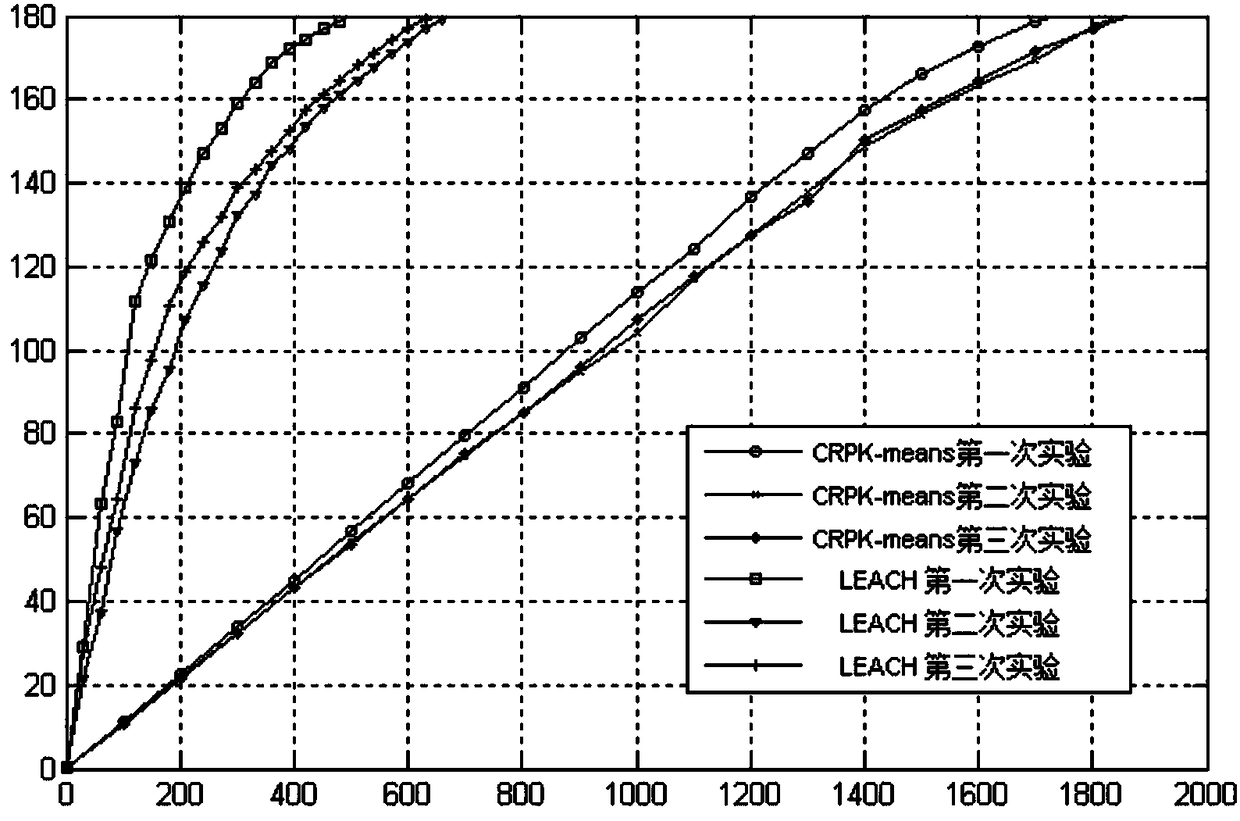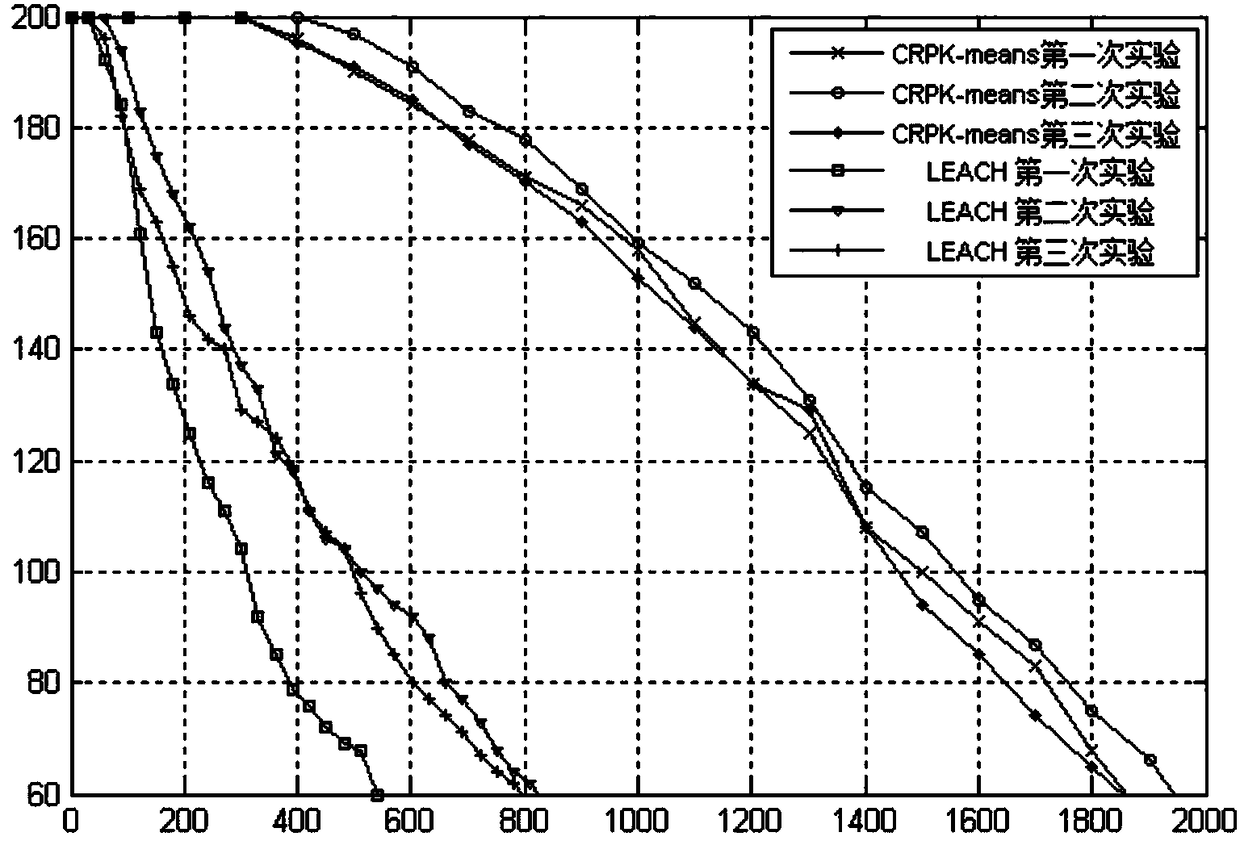Mine environment wireless sensor network clustering routing protocol based on K-means (CRPK-means)
A wireless sensor network and K-means technology, applied in the field of wireless sensor networks, can solve the problems of uncertain number of cluster heads, premature death, large randomness of distribution range, etc., to achieve excellent performance, prolong life cycle, and balance the network load effect
- Summary
- Abstract
- Description
- Claims
- Application Information
AI Technical Summary
Problems solved by technology
Method used
Image
Examples
Embodiment Construction
[0046] Below in conjunction with the simulation results, the mine environment wireless sensor network clustering routing method based on K-means proposed by the present invention is described in detail:
[0047] The clustering routing method of mine environment wireless sensor network based on K-means, its implementation process is as follows:
[0048] In a rectangular area, randomly spread N sensor nodes, D={x 1 ,x 2 ,...,x N} represents the sensor node sample set, according to the cluster division obtained by the K-means algorithm C={C 1 ,C 2 ,...C K} The minimized squared error is:
[0049]
[0050] in, Indicates that node n is classified as cluster k when it is 1, otherwise it is 0;
[0051] N is the total number of sensor nodes;
[0052] x n is the nth sensor node;
[0053] mu k is the sample mean in each cluster;
[0054] In the formula, K is the number of clusters, and the optimal number of cluster heads is:
[0055]
[0056] Among them, ε fs Amplif...
PUM
 Login to View More
Login to View More Abstract
Description
Claims
Application Information
 Login to View More
Login to View More - R&D
- Intellectual Property
- Life Sciences
- Materials
- Tech Scout
- Unparalleled Data Quality
- Higher Quality Content
- 60% Fewer Hallucinations
Browse by: Latest US Patents, China's latest patents, Technical Efficacy Thesaurus, Application Domain, Technology Topic, Popular Technical Reports.
© 2025 PatSnap. All rights reserved.Legal|Privacy policy|Modern Slavery Act Transparency Statement|Sitemap|About US| Contact US: help@patsnap.com



